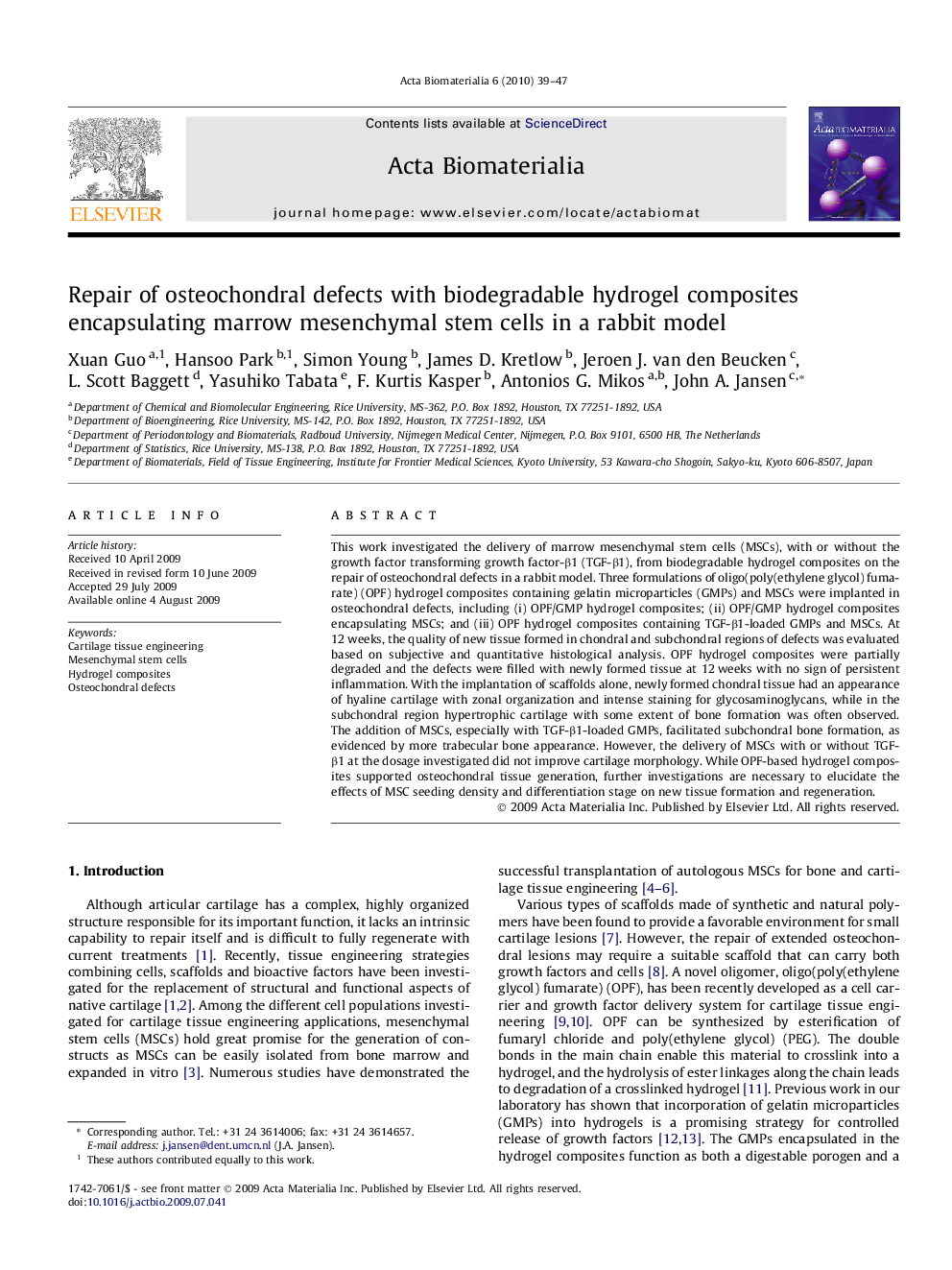| Article ID | Journal | Published Year | Pages | File Type |
|---|---|---|---|---|
| 10160352 | Acta Biomaterialia | 2010 | 9 Pages |
Abstract
This work investigated the delivery of marrow mesenchymal stem cells (MSCs), with or without the growth factor transforming growth factor-β1 (TGF-β1), from biodegradable hydrogel composites on the repair of osteochondral defects in a rabbit model. Three formulations of oligo(poly(ethylene glycol) fumarate) (OPF) hydrogel composites containing gelatin microparticles (GMPs) and MSCs were implanted in osteochondral defects, including (i) OPF/GMP hydrogel composites; (ii) OPF/GMP hydrogel composites encapsulating MSCs; and (iii) OPF hydrogel composites containing TGF-β1-loaded GMPs and MSCs. At 12 weeks, the quality of new tissue formed in chondral and subchondral regions of defects was evaluated based on subjective and quantitative histological analysis. OPF hydrogel composites were partially degraded and the defects were filled with newly formed tissue at 12 weeks with no sign of persistent inflammation. With the implantation of scaffolds alone, newly formed chondral tissue had an appearance of hyaline cartilage with zonal organization and intense staining for glycosaminoglycans, while in the subchondral region hypertrophic cartilage with some extent of bone formation was often observed. The addition of MSCs, especially with TGF-β1-loaded GMPs, facilitated subchondral bone formation, as evidenced by more trabecular bone appearance. However, the delivery of MSCs with or without TGF-β1 at the dosage investigated did not improve cartilage morphology. While OPF-based hydrogel composites supported osteochondral tissue generation, further investigations are necessary to elucidate the effects of MSC seeding density and differentiation stage on new tissue formation and regeneration.
Related Topics
Physical Sciences and Engineering
Chemical Engineering
Bioengineering
Authors
Xuan Guo, Hansoo Park, Simon Young, James D. Kretlow, Jeroen J. van den Beucken, L. Scott Baggett, Yasuhiko Tabata, F. Kurtis Kasper, Antonios G. Mikos, John A. Jansen,
